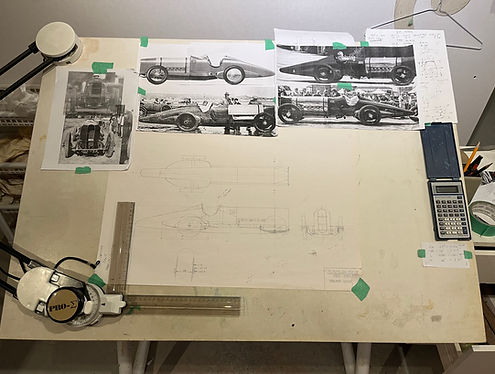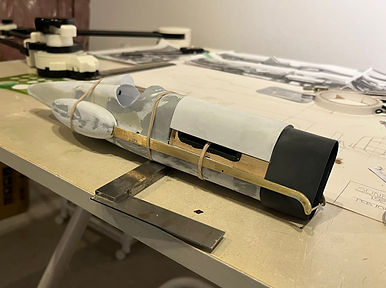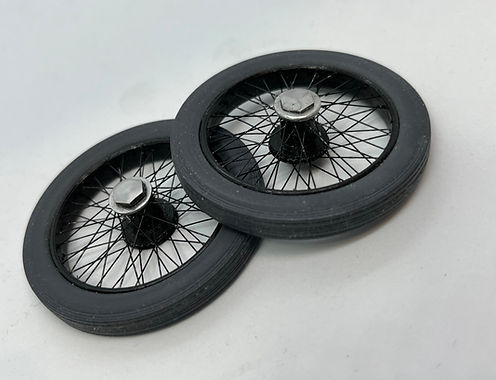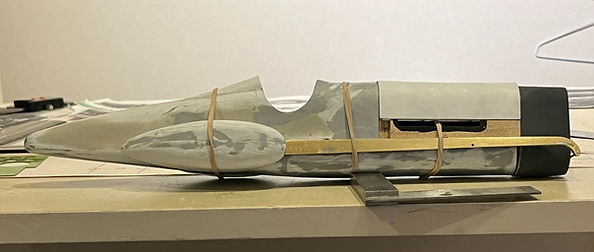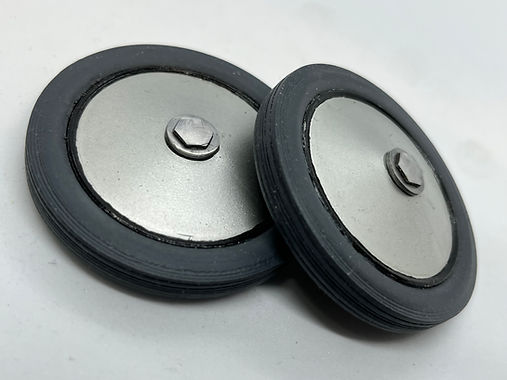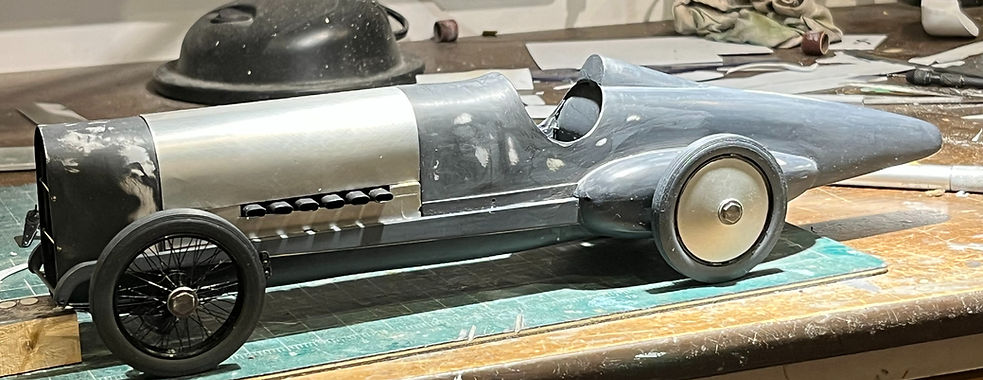1924 Bluebird

After the First World War men's thoughts turned to happier, more inconsequential things such as motor racing and record breaking. The pre-war Land Speed Record was held by L.G.Hornsted in a Blitzen Benz at 124.1 mph. The British firm of Sunbeam had built many aircraft engines during the war, and in 1920 they devised the concept of installing one of their "Manitou" engines in a custom built chassis. The engine was somewhat modified but gave 350 hp from its 18.3 litre V12 unit, and was equipped with a 4-speed gearbox to enable the car to run in circuit races at Brooklands and in continental hillclimbs. This it achieved very successfully until 1922 when Sunbeam decided their car was capable of braking the existing LSR. On May 17 1922, the car was taken out to the Brooklands circuit, driven by Kernelm Lee Guiness. He used a full circuit to build up speed in the measured kilometre along the Railway Straight. They achieved a mean speed over the two directions of 133.75 mph, 9.7 mph faster than the existing 1914 record, and it lasted for two years.
Malcolm Campbell was an ex-RFC pilot and was destined to make a considerable name for himself in the realm of record breaking. He was convinced he could make the 350 hp Sunbeam go faster, and he persuaded the Sunbeam Company to sell him the car. He entered an international speed event in Denmark where he achieved a mean speed of 136.31 mph, but the timing system was not approved by the recognized authority so the time wasn't recognized. Disappointed but determined, Campbell made modifications to the car, painted it in his favourite shade of blue, and gave it the name "Bluebird", the first of many Bluebirds that carried Campbell to many triumphs during his racing career. By 1924 the LSR was now held by Eldridge's Fiat at 146.01 mph, but Campbell found a suitable beach at Pendine in South Wales and set about breaking the record. Unfortunately the sands were patchy with hard and soft areas and the soft areas slowed the car down as if it were suddenly braked. However he did succeed in a two way mean of 146.16 mph, so the record weas his by a mere 0.15 mph. It is this version of the car that is modelled and shown here in miniature form, but it is not the end of the story. Campbell really believed his faithful old Bluebird was capable of breaking the 150 mph barrier, and when the new Bluebird he was building turned out to take much longer to construct than expected, he decided to give the old car one more chance. The Campbell equipe wended it's way back to Pendine Sands in July 1925 and this time the sands were in perfect condition so he had no trouble in taking the land speed record above 150 mph for the first time. So the 350 hp Sunbeam, aka Bluebird 1, became the only car ever to break the LSR on 3 separate occasions over a period of 3 years.
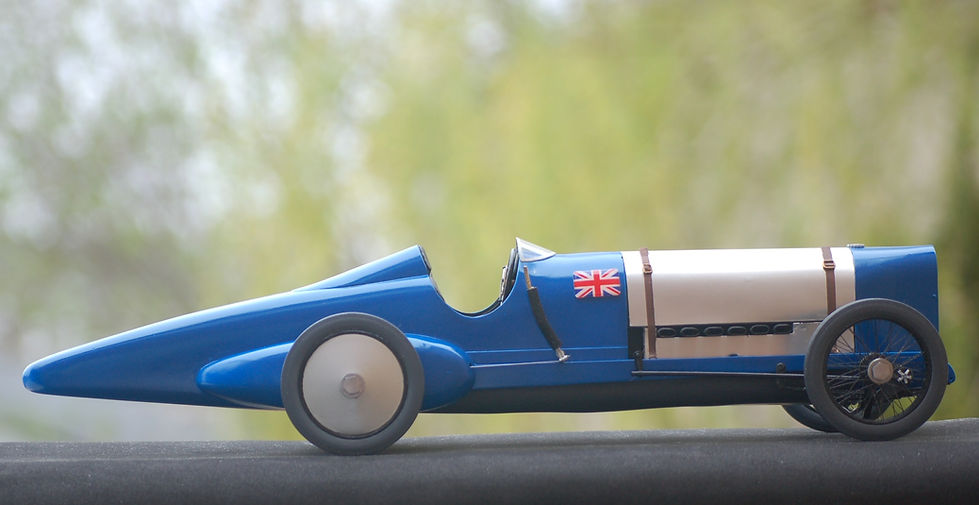

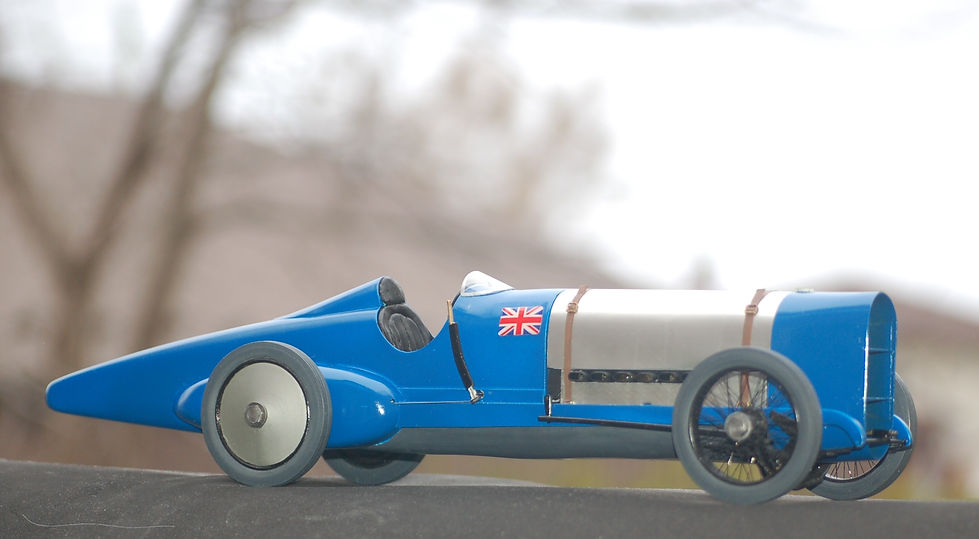
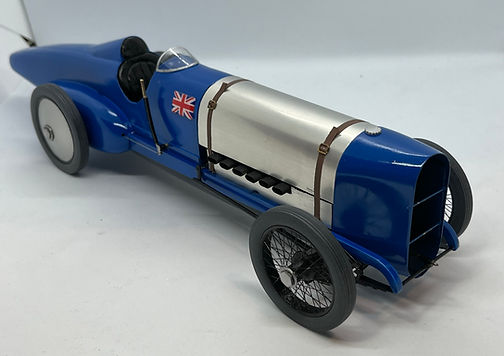
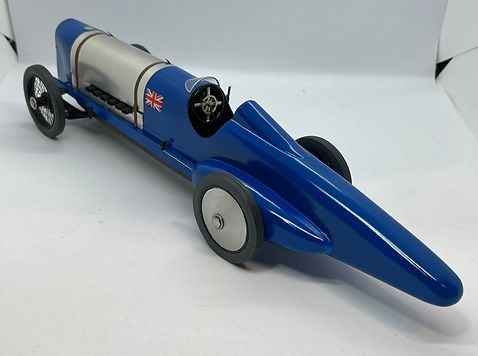
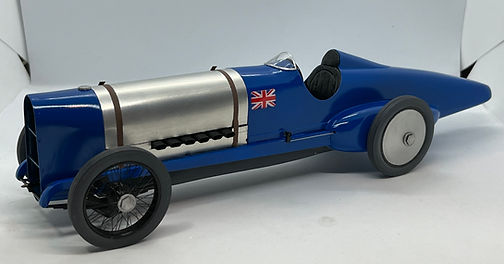
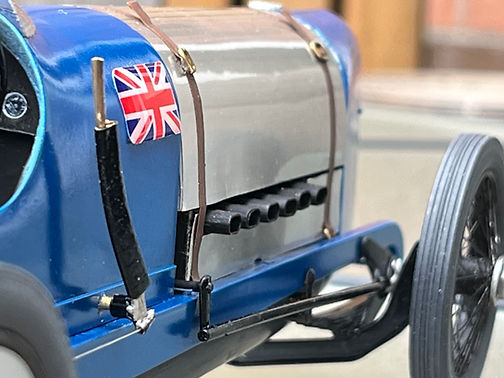
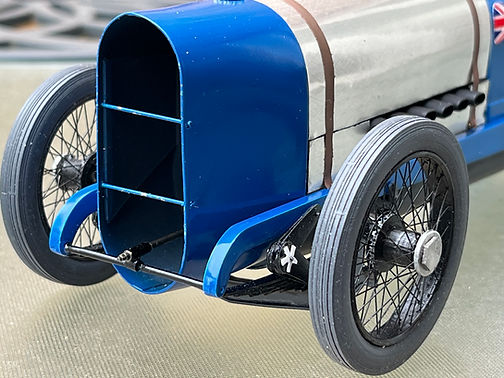
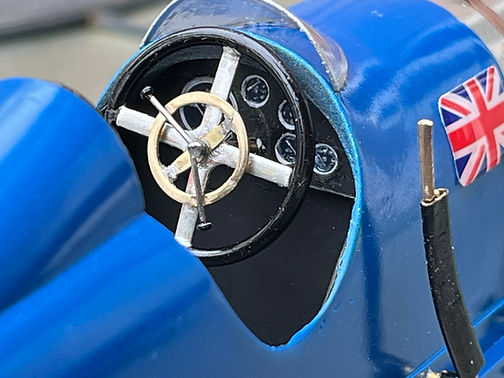
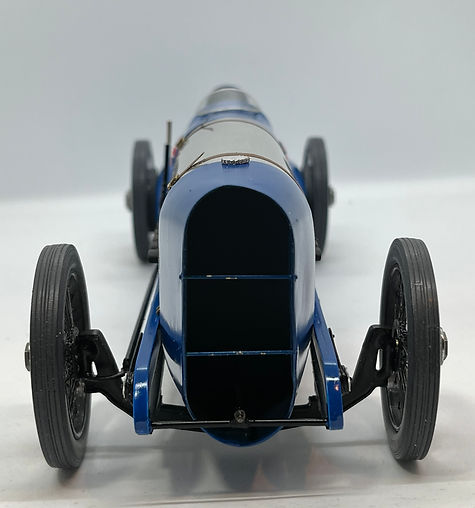
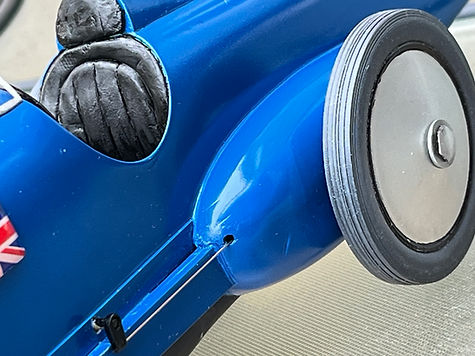
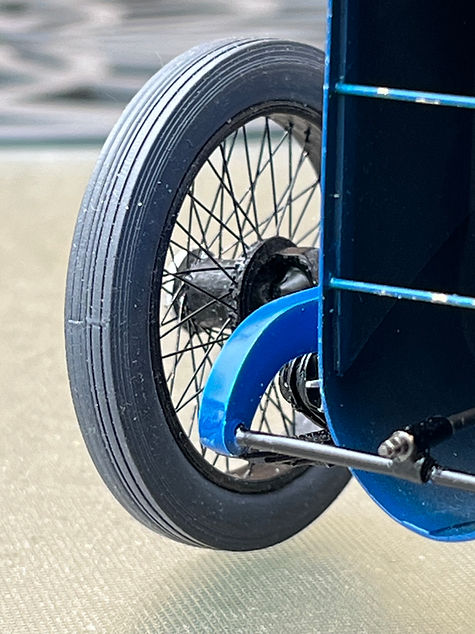

building the model
